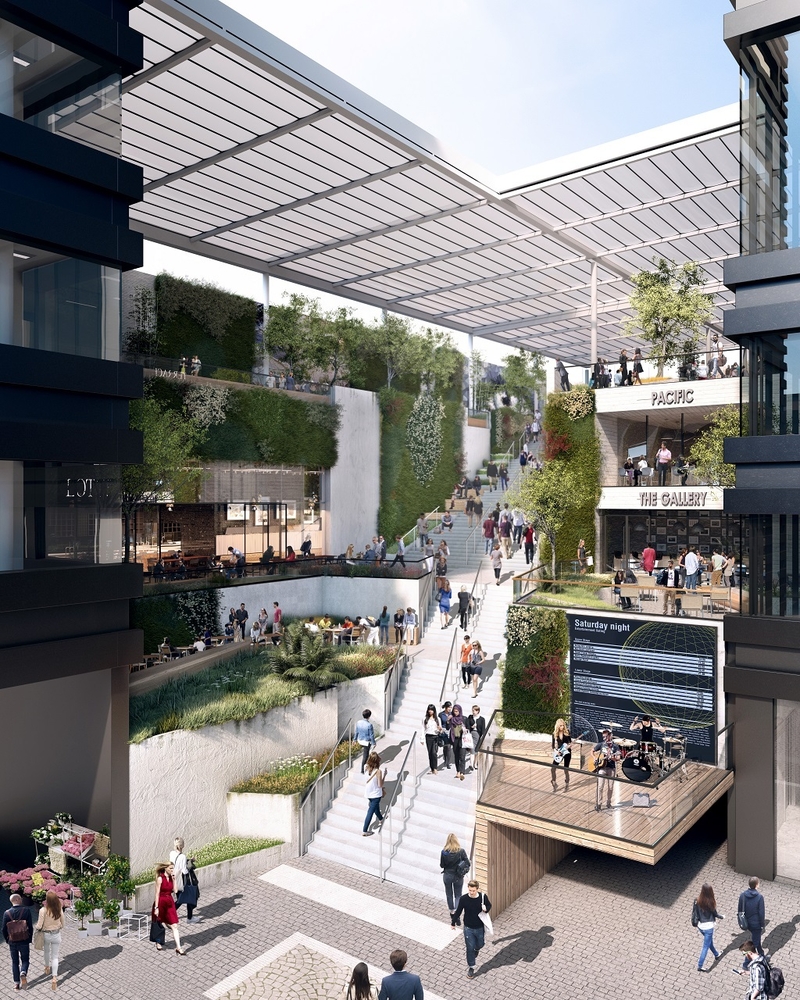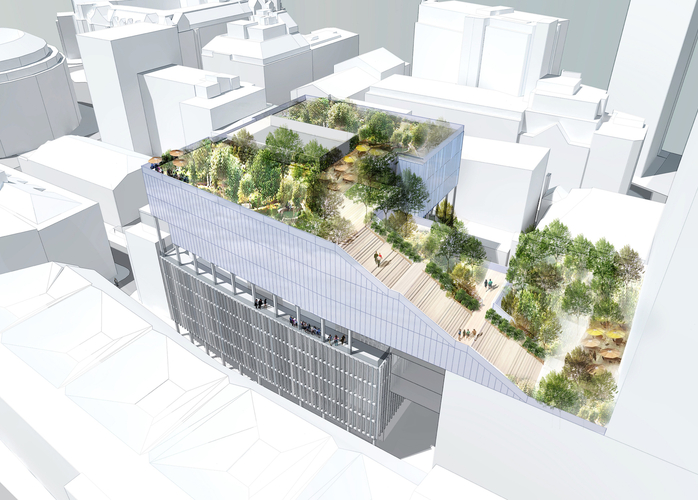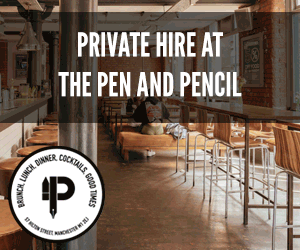Single tower to replace twin bronze skyscrapers as heritage buildings are saved from the wrecking ball
We arrived not expecting much. Perhaps a few metres lobbed off here, a lighter cladding there, a new water feature maybe. We'd been here before, of course, in January, when following considerable backlash, the Gary Neville-fronted, council-backed, Far East-funded development consortium behind plans to erect two gloomy black skyscrapers opposite Manchester’s Grade I-listed town hall and library had responded to objectors with just one token concession: they’d change the colour of the towers from Mordor black to 'anodised bronze' (that's dark brown to you and me).
So perhaps the handful of journos, traipsing through the puddles towards Neville’s office in Castlefield on Tuesday to hear about the latest changes to the St Michael’s development, could be forgiven their cynicism.
Though, as Neville strode into the room and dropped new plans on the table amongst the pastries, it became quickly clear we weren’t here to talk concessions: this was a complete rethink.
The contentious ‘rabbit ear’ towers, he explained, had been scrapped altogether, as had (to his pain) those silly ‘Spanish’ steps-to-nowhere, and the ill-thought-out street interactions on Jackson’s Row and Bootle Street.
In fact, barely any of the 1.5 acre scheme that Historic England said would ‘irreparably damage’ Manchester's civic core remained at all.
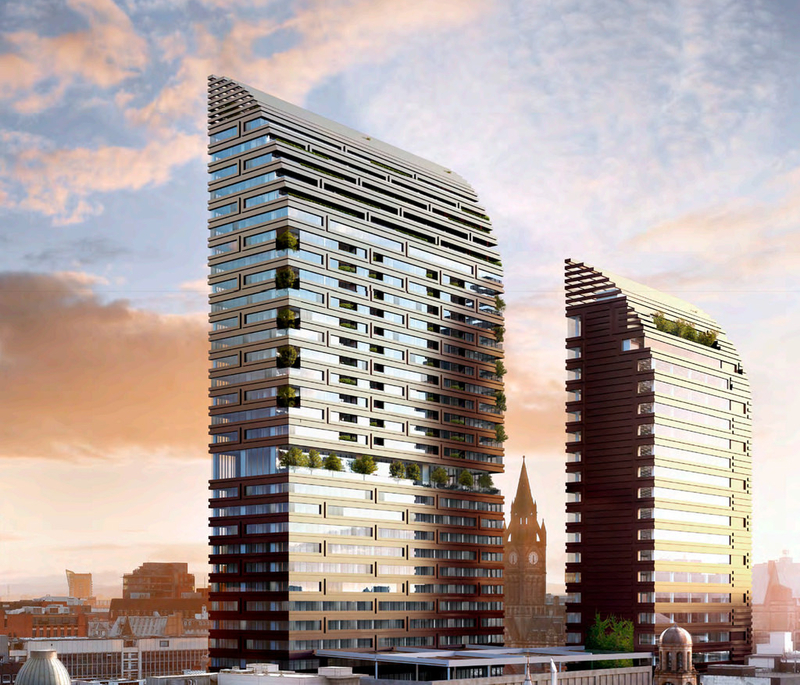
In its place stood one single (and more sensitive) glazed tower – two metres shorter than the highest point of the previous scheme - set further to the west and turned 90 degrees so as to appear ‘slimmer and less obtrusive’ from St Ann's Square.
The loss of the second tower, meanwhile, had been counterbalanced by increasing the floor plates of two nine-storey subsidiary blocks to the east of the site, which now featured an impressive public rooftop square (see image below).
Perhaps the most unexpected change though was the proposed retention of the previously doomed Sir Ralph Abercromby pub and the grand Portland Stone frontage to Bootle Street Police Station - two buildings the Twentieth Century Society recently sought to protect in an appeal to the Secretary of State.
"We want it to become what the Oast House is to Spinningfields"
Confidential has argued from the outset that the pub's demolition was unnecessary - given its location on the fringe of the development - so revised plans to make it the ‘heritage focus’ of a new public square are welcome ones indeed. "We want it to become what the Oast House is to Spinningfields,” said Neville.
Uses for the former police station, meanwhile, are still being discussed, with Neville floating the possibility of a boutique hotel and roof terrace resembling that of 'the Oxo Tower Wharf in London'.
The demolition of the synagogue, however, will still go ahead, with plans for a new synagogue incorporated into the new complex retained.

So what's changed?
- Two towers scrapped and replaced with one single and more sensitive tower of 134.5m - two metres shorter than previous scheme (design yet to be finalised but likely to be glazed).
- Second tower replaced by medium-rise office blocks of increased floor plates.
- Retention of the Sir Ralph Abercromby pub, which will become the heritage focus of a new public square.
- Retention of the grand Portland Stone facade of the Bootle Street Police Station, which could become a boutique hotel or high-end offices.
- Raised public rooftop garden will offer respite for residents, workers and visitors.
- Revised scheme will still offer a new five star hotel, high-end office and apartments, plus ground and rooftop food and beverage units.
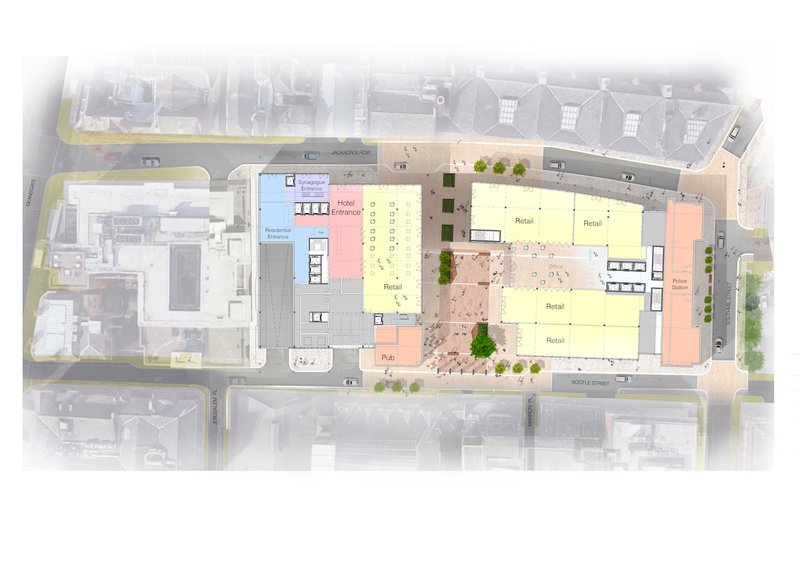
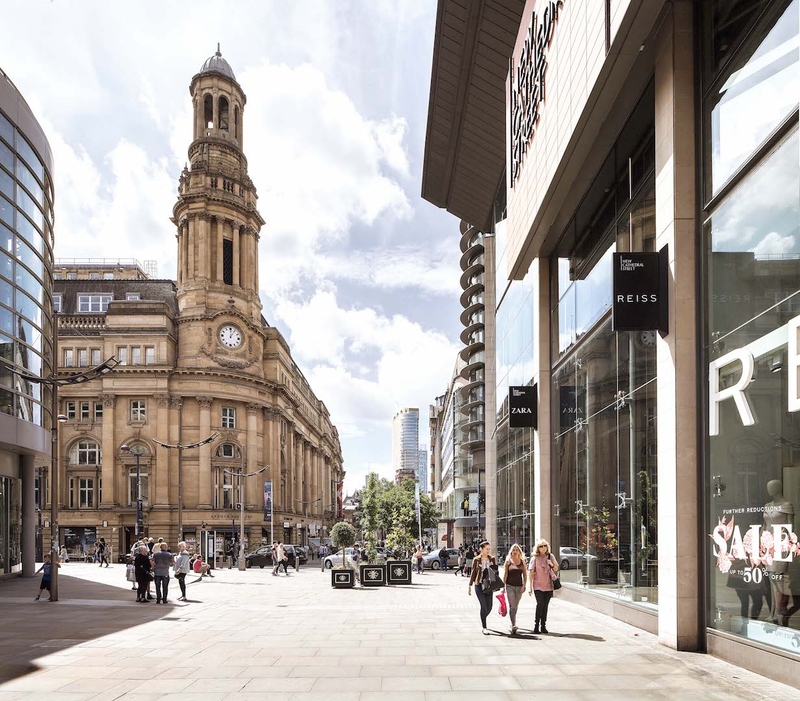
So why the drastic U-turn?
Following a volley of criticism, the partnership postponed its planning application in March, as the council - which owns much of the site (and stands to make a hefty profit from the scheme) - drafted in Stirling Prize-winning Manchester architect, Stephen Hodder (pictured above), to carry out an independent review of the original plans by Ken Shuttleworth's Make Architects.
Once Hodder approached Historic England with 'a clean sheet of paper', it became clear Make's position was untenable, and they bowed out of the project in June, leaving Hodder to adopt the role of chief architect.
During the press briefing, Hodder said the new designs sought to tackle many of the concerns thrown up during previous public consultations, including the loss of heritage assets, the design of the two towers and the lack of street activation.
"One of the great opportunities with this site is to link the civic core with Deansgate and Spinningfields by way of activating Bootle Street and Jackson's Row," explained Hodder during the press briefing. "By altering the design we can now activate 90% of the perimeter - streets need people and movement."
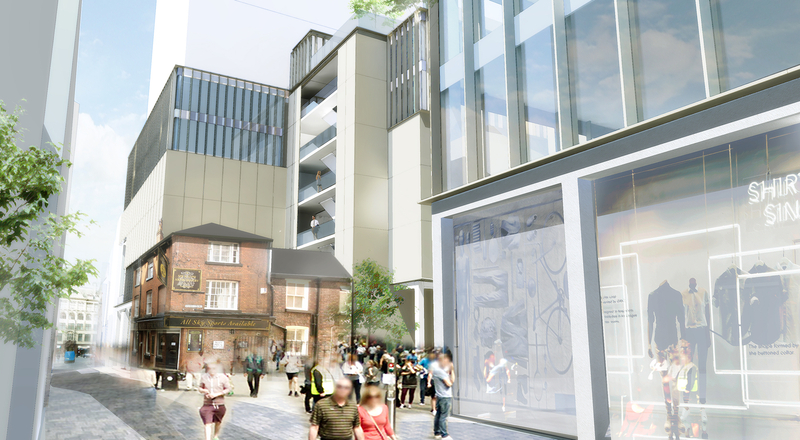
According to Hodder, the new plans have been 'very well received' by Historic England.
In a statement released today, the heritage organisation said 'positive steps have been made towards delivering a better scheme'.
Catherine Dewar, Historic England's planning director in the North West, said: "We strongly believe that this extraordinary area of Manchester deserves a thoughtful scheme which responds to its surroundings, contributes to neighbouring streets and welcomes people in.
"The new proposals are much closer to achieving this and have the potential to enhance the character of the Deansgate/Peter Street conservation area, rather than dominate it."
"By altering the design we can now activate 90% of the perimeter - streets need people and movement" - Stephen Hodder
To finally have Historic England on board is clearly a major relief for Neville, who admitted that his change of heart over St Michael's followed the organisation's 'damning' statement, released in February and widely circulated by the press.
"It wasn't the noise which bothered me," explains Neville, "but the letter from Historic England was the big one. The BBC and Sky picked it up, it was in the national papers. At that point the weight of objection stacked up, the scheme no doubt had flaws and on reflection we underestimated the importance of buildings like the pub.
"When you sit back and see new designs and approaches coming through, you realise we didn't need to do certain things. The towers didn't need to protrude over the top of Central Library, the pub didn't need to be demolished. I still look at the old scheme and regret losing certain parts, but we've certainly gained a lot with the new scheme.
"Do I prefer the new scheme? I wouldn't say that. It's more balanced and the right approach to take right now."
The numbers:
- St Michael's is expected to create 1500 new jobs.
- An economic impact study estimates that St Michael's will contribute £80.7m in GVA to the local economy and £147m in government tax over the next decade.
- Original plans comprised a 31 storey tower and a 21 storey tower totalling 200 hotel rooms, 153 high-end apartments, as well as offices, bars, restaurants and shops.
Members of the public are being invited to view the new proposal in Rooms 2 and 3 of Central Library on Wednesday 12 July. Following the consultation period the revised plans are expected to go before the council by October.
